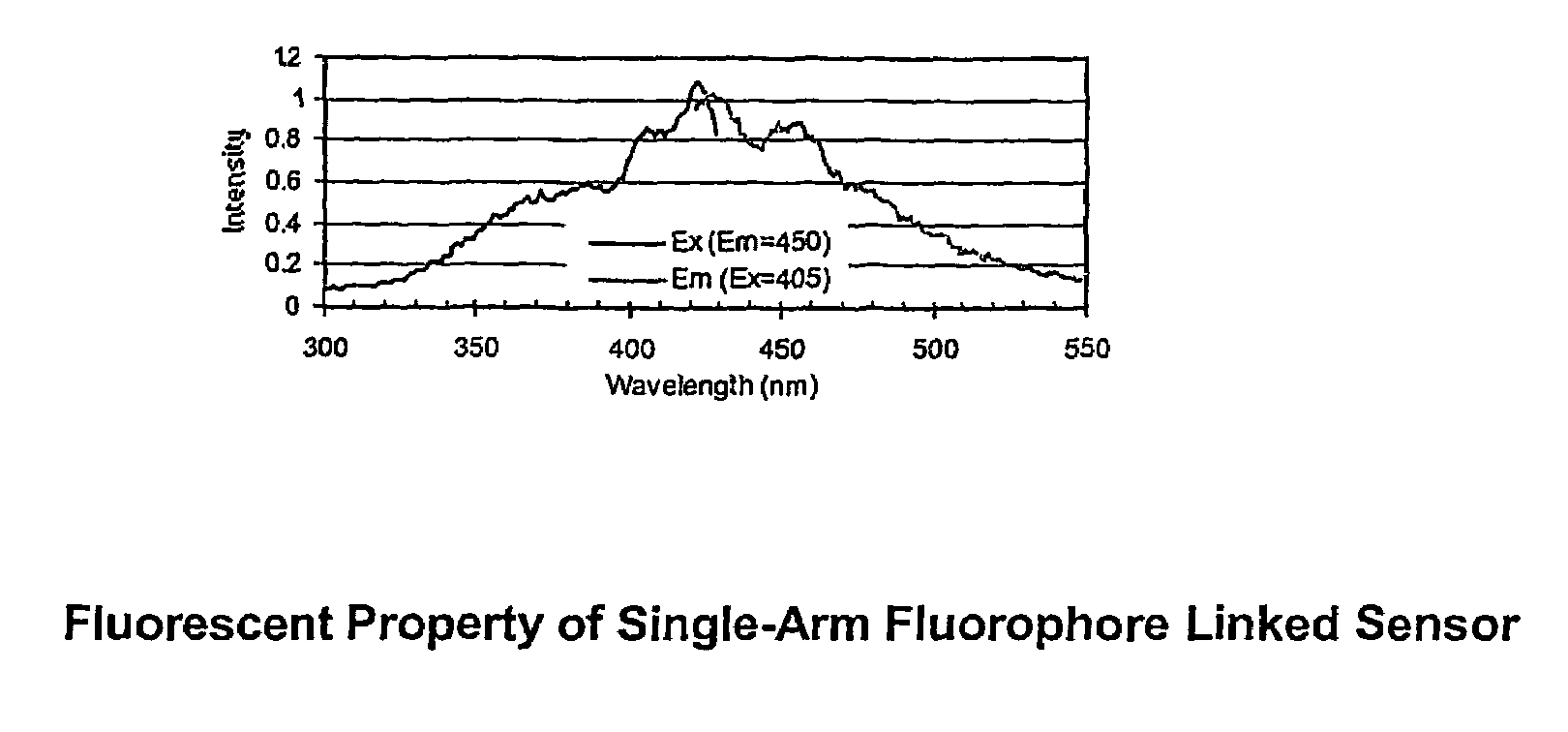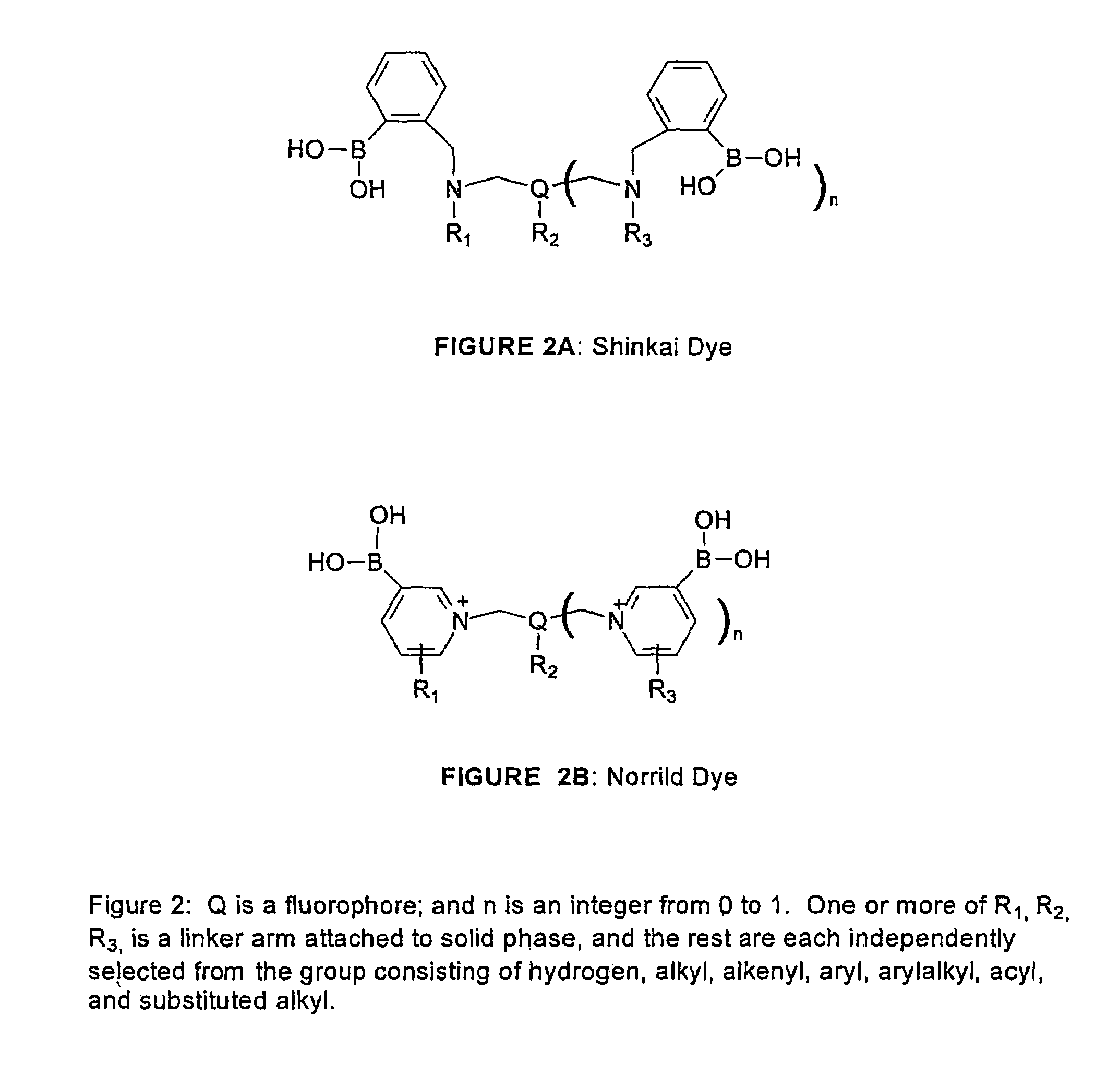Solid-phase saccharide sensing compounds
a saccharide sensor and solid-phase technology, applied in the field of bisboronic acid-based saccharide sensors, can solve the problems of reducing molecular freedom, altering electrochemistry, and difficult design of fluorescent sensors based on boronic acid-saccharide interaction
- Summary
- Abstract
- Description
- Claims
- Application Information
AI Technical Summary
Benefits of technology
Problems solved by technology
Method used
Image
Examples
examples
1. Shinkai Mono-phenylboronate / Single-arm Type
[0068]The dye designated PZ-33, its synthesis, and a means for immobilizing it to a Cuprophan substrate are illustrated in FIG. 4.
[0069]PZ-33 is made with a linker arm attached to the nitrogen bridge between the benzene moiety and the anthracene moiety. The soluble dye senses saccharide over the physiologic range, but is somewhat sensitive to pH and ionic strength. The dye, both in solid-phase and soluble form, has limited stability when exposed to sterilization, high humidity, and high temperature.
[0070]When attached to a regenerated cellulose film (Cuprophan) via the linker arm, the dye retained saccharide sensitivity. However, the slope was less than the corresponding molecule in solution. The time response for binding glucose was very fast, less than a minute, but release was very slow. Sensitivity to shelf life and sterilization forces appears similar to soluble molecule.
[0071]An analogous compound (G47) with a pyrene fluorophore wa...
PUM
| Property | Measurement | Unit |
|---|---|---|
| emission peak | aaaaa | aaaaa |
| pKa | aaaaa | aaaaa |
| pKa | aaaaa | aaaaa |
Abstract
Description
Claims
Application Information
 Login to View More
Login to View More - R&D
- Intellectual Property
- Life Sciences
- Materials
- Tech Scout
- Unparalleled Data Quality
- Higher Quality Content
- 60% Fewer Hallucinations
Browse by: Latest US Patents, China's latest patents, Technical Efficacy Thesaurus, Application Domain, Technology Topic, Popular Technical Reports.
© 2025 PatSnap. All rights reserved.Legal|Privacy policy|Modern Slavery Act Transparency Statement|Sitemap|About US| Contact US: help@patsnap.com



